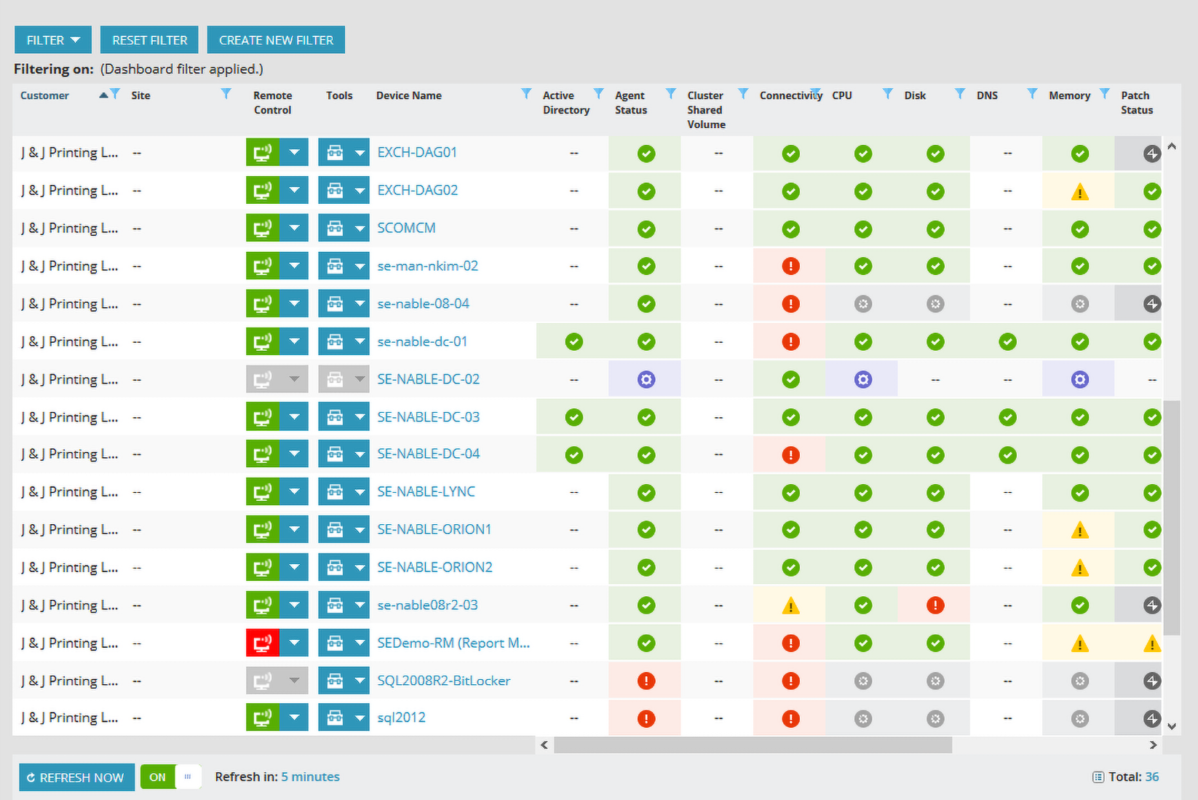Remote monitoring tools windows – Remote monitoring tools for Windows are indispensable for managing and securing your systems, providing insights into performance, health, and security. These tools empower you to monitor your Windows devices remotely, regardless of location, ensuring smooth operation and timely problem resolution.
Table of Contents
From basic system monitoring to advanced security analysis, remote monitoring tools offer a comprehensive suite of features that cater to diverse needs. Whether you’re an individual managing a home computer, a small business owner overseeing a network, or a large enterprise managing a complex IT infrastructure, these tools provide the necessary visibility and control to optimize your Windows environment.
Practical Applications of Remote Monitoring Tools: Remote Monitoring Tools Windows
Remote monitoring tools are essential for managing and maintaining modern IT systems. They provide real-time visibility into system performance, security, and user activity, allowing administrators to identify and address issues before they impact users. These tools are used across various industries and have become integral to ensuring business continuity and security.
System Administration
Remote monitoring tools play a crucial role in system administration, simplifying the management of complex IT environments. They provide administrators with comprehensive insights into system performance, resource utilization, and potential bottlenecks.
- Performance Monitoring: These tools allow administrators to monitor key performance indicators (KPIs) such as CPU usage, memory consumption, disk space, and network bandwidth. This helps identify performance issues and proactively optimize system resources.
- Resource Utilization: By monitoring resource utilization, administrators can identify areas where resources are being overutilized or underutilized. This information helps optimize resource allocation and improve system efficiency.
- Troubleshooting: When system errors occur, remote monitoring tools can help administrators quickly identify the root cause of the problem. They provide detailed logs and performance metrics, enabling faster resolution of issues.
IT Support, Remote monitoring tools windows
Remote monitoring tools are essential for providing efficient and effective IT support. They enable IT support teams to remotely monitor and troubleshoot user devices, reducing downtime and improving user satisfaction.
- Proactive Monitoring: Remote monitoring tools can detect and alert support teams to potential issues before they impact users. This allows for proactive intervention and prevents service disruptions.
- Remote Troubleshooting: IT support teams can use remote monitoring tools to remotely access and troubleshoot user devices, resolving issues without requiring on-site visits.
- User Experience Monitoring: Remote monitoring tools can track user activity and identify performance issues that impact user experience. This allows support teams to address these issues quickly and improve user satisfaction.
Network Monitoring
Remote monitoring tools are crucial for managing and maintaining network infrastructure. They provide real-time insights into network performance, security, and user activity, allowing administrators to identify and address issues proactively.
- Network Performance Monitoring: These tools monitor network traffic, latency, and bandwidth utilization, identifying potential bottlenecks and performance issues.
- Network Security Monitoring: Remote monitoring tools can detect and alert administrators to security threats, such as unauthorized access attempts, malware infections, and network intrusions.
- Network Troubleshooting: When network issues arise, remote monitoring tools provide valuable information to help administrators quickly diagnose and resolve the problem.
Security Management
Remote monitoring tools are essential for maintaining a secure IT environment. They provide real-time visibility into system activity, security events, and potential threats, allowing administrators to identify and respond to security incidents promptly.
- Threat Detection: These tools can detect and alert administrators to suspicious activity, such as unauthorized access attempts, malware infections, and data breaches.
- Security Event Monitoring: Remote monitoring tools provide detailed logs of security events, enabling administrators to track security incidents and identify potential vulnerabilities.
- Security Posture Assessment: Remote monitoring tools can assess the security posture of systems and networks, identifying areas of weakness and recommending security improvements.
The Future of Remote Monitoring Tools for Windows

The landscape of remote monitoring tools for Windows is constantly evolving, driven by advancements in technology and the changing needs of businesses. Cloud computing, artificial intelligence (AI), and automation are transforming how we monitor and manage our systems, paving the way for more sophisticated and efficient solutions. This section will explore the emerging trends and future advancements in remote monitoring technologies, analyzing the potential impact of these key drivers and identifying potential challenges and opportunities for the future.
Impact of Cloud Computing
Cloud computing has revolutionized how we access and utilize software and services. Remote monitoring tools are increasingly leveraging cloud infrastructure to offer several advantages:
- Scalability and Flexibility: Cloud-based tools can easily scale to accommodate growing monitoring needs, offering flexible deployment options and on-demand resources.
- Cost-Effectiveness: Cloud solutions often eliminate the need for expensive hardware investments, offering a pay-as-you-go model that can significantly reduce costs.
- Accessibility and Collaboration: Cloud-based tools provide anytime, anywhere access from any device, facilitating seamless collaboration among teams.
- Enhanced Security: Cloud providers invest heavily in security infrastructure, offering robust security measures and compliance with industry standards.
As cloud adoption continues to grow, remote monitoring tools will increasingly integrate with cloud platforms, providing comprehensive monitoring solutions for hybrid and multi-cloud environments.
Conclusive Thoughts

In today’s interconnected world, remote monitoring tools for Windows are essential for maintaining optimal system performance, proactively addressing issues, and safeguarding sensitive data. By leveraging the power of these tools, individuals and organizations can achieve greater efficiency, productivity, and peace of mind, knowing that their Windows systems are under constant surveillance and protection.
Remote monitoring tools for Windows offer a wide range of features, from basic system health checks to advanced security measures. If you’re dealing with particularly stubborn malware, consider using a specialized tool like Norton Power Eraser for deep cleaning and removal.
Once you’ve addressed any potential threats, you can return to your regular remote monitoring tools to maintain ongoing security and performance.
